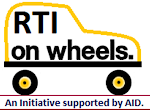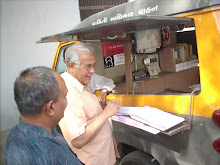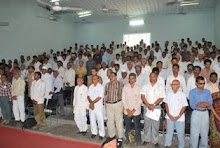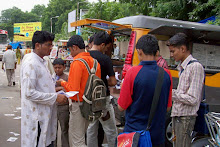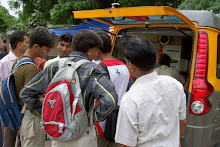News Magazine: Burma: Thursday,
May 19, 2016.
One of the
many buzzwords hovering around Burma’s transition to democracy is “access to
information.” Indeed, the call for crafting legislation on the right to
information could not have come at a better time.
Some initial
steps have likely been taken to put together a draft. The initiative is no
doubt laudable as it creates the much-needed environment to kick-start a
discussion on this very vital subject matter. However, a lot more needs to be
done, and civil society, the people, farmers and the marginalized have to play
a role, rather than only depend on the media or any one group to show the way.
When I hear
all the talk surrounding “access to information,” I am reminded of how the
Right To Information (RTI) Act unfolded in Burma’s next-door neighbor, India.
The movement
in India started in 1987 with farmers demanding their right to information
about land use and government policies in a small village called Devdungri, in
the western state of Rajasthan.
It began with
three friends from different backgrounds coming together and settling down in
Devdungri to work for social justice. The three were Aruna Roy, who resigned
from the civil service and began working on issues related to the poor and
marginalized, Shanker Singh, a leading figure in “people’s theater,” and Nikhil
Dey, a US-educated scholar. Together, they formed the Mazdoor Kisan Shakti
Sangathan (MKSS).
During the
next 10 years, they patched together an alliance with farmers and workers to
form one of India’s most successful social justice movements. Thus, the RTI
effort was a movement that touched every segment of society and did not solely
rely on media, which served as more of a partner in the information
dissemination process.
The
grassroots community contributed a lot to the movement. As a journalist, I was
a small part of the movement stationed in a hill station called Shillong, where
I witnessed activists, musicians, journalists, artists and students take to the
streets to advocate for the implementation of the RTI Act. Visuals of police
crackdowns on demonstrations, arrests of demonstrators and their release
followed by a long period of open dialogue between the government and the
people are all still vivid to this day.
To see a
movement started by poor people succeed surprised many. That is exactly what
many in Burma are perhaps yet to fathom. RTI activists in India are of the
opinion that “information is an effective tool to force open the doors of
citizen participation in governance.”
RTI activist
Vivek Kumer recounts in his study, “The Right to Know Movement in India,” “It
was against this background that an organization emerged in the late 1980s with
a rather unusual demand the right of citizens to obtain government information
and official records. The MKSS saw the right to information as critical to
enable citizens to question officials about public resources and to demand
accountability.”
According to
scholar Prashant Sharma, the RTI Act was “a radical departure from the access
to information regime that existed prior to the enactment of this law.”
Previously,
under the Official Secrets Act of 1923, all information held by public
authorities was considered secret by default, unless the government itself
deemed it otherwise. Sharma goes on to add that the specific nature of the RTI
Act makes it “a very strong one within the context of access to information
laws throughout the world and is seen as a transformatory piece of legislation
that is fundamentally altering the citizen-state relationship in the country.”
Today the
Central Information Commission and State Information Commissions are tasked
with facilitating the passage of information from the government to the people.
It is estimated that more than 2 million applications for information from all
over India were submitted under the RTI Act from 2005, the year the legislation
was passed, to 2008.
The RTI Act
has been used by NGOs and citizens to unearth all forms of information from the
government, including conversations and exchange of notes between the prime
minister and members of parliament, ministers and the bureaucracy.
Burma could
perhaps take a leaf out of the annals of the RTI chapter in India and use it to
prepare a robust law that cannot be disregarded or misused by any government in
power. The issues surrounding the Burma polity are not too different from how
things were in India, so there would be several lessons that could be drawn
from India’s RTI story.
The culture
of the struggle for justice is nothing new to the people of Burma. They have
been engaged in it for more than five decades under military rule. However,
this is not to suggest that every RTI story requires a hard-fought battle. If
there exists political will to develop an all-inclusive law that caters to the
needs of all, especially the marginalized farmers whose lands have been
confiscated, forests that have been taken from the people, the poor and working
class who lack proper wages, migrant workers (documented and undocumented) that
are stuck in the bordering areas of Thailand and in Malaysia then things are
already moving in the right direction.
With a new
government in place that has been elected through a largely free and fair
election, the expectations are high for passage of just laws that will improve
the lives of farmers, reduce unemployment, provide minimum wages to workers and
protect people’s land and livelihoods.
The
author is a former journalist currently working on elections, communications
outreach and governance issues. The opinions expressed in this article are his
own and do not reflect that of any organization. His email address is
bidhayak.d@gmail.com.




